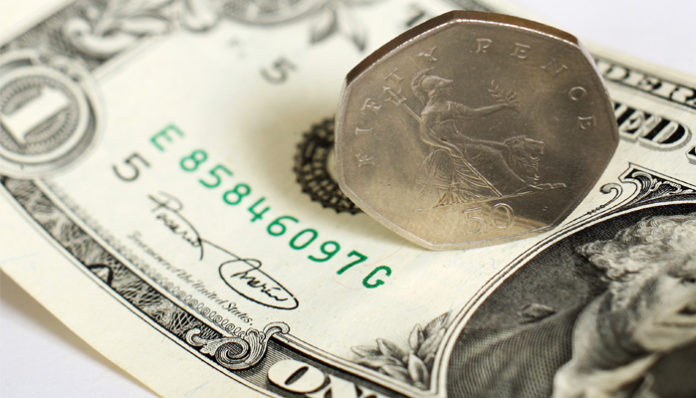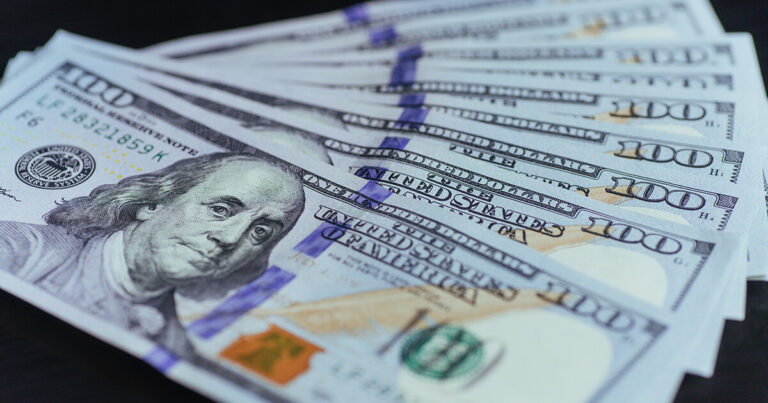
Turbulent prices featured significantly in this week’s forex business news as financial traders focused on the highly expected Fed Reserve monetary policy statement mid-week.
However, the Fed left its monetary policy unchanged, causing traders to shift focus to bond yields, economic updates, covid 19 news, and geopolitics tensions. There were concerns over coronavirus resurgence, delayed vaccination rollout, AstraZeneca health risk, and US-China tension in the business news.
Yet, overall, the forex market was unmoved by the negative news – there was no free fall in the safe-haven assets. By the close of the week, safe-haven currencies emerged as the best performers. On the receiving end, the euro, Aussie dollar and sterling closed the week weaker.
The Fundamentals
COVID-19 News
Amidst the continuing vaccination rollout, there was a resurgence in COVID-19 new cases in some countries, notably France, Brazil, and India.
Controversies surrounding the safety of AstraZeneca dominated forex business news over the week. Earlier in the week, some countries suspended its usage for fear that it causes a blood clot.
While those countries that authorized and desperately need the AstraZeneca vaccine yet to be supplied, tens of millions of the vaccine doses lie idle in the US manufacturing facility awaiting trial results.
And on Thursday European Medical Agency (EMA) declared the AstraZeneca vaccine’s benefits in the war against the virus outweighs the risk. According to EMA director Emer Cooke, the AstraZeneca vaccine is safe and effective, triggering many nations to resume its usage.
10-Year Yields Inched Closer To 2% Handle
The 10-year bond yield continued to increase, surging to a high of 1.754% over the week before setting firmly at 1.732%. The Fed’s meeting and positive economic outlook uplifted the bond.
While the US treasury surge dominated forex business news, the rising yields weighed heavily on Australian and New Zealand dollars. Meanwhile, in a rare public display, China and the US rebuke each other.
US-China Flare-Ups
On Thursday, the tension between the two superpower nations escalated following the diplomatic talks in Alaska. Under Bidens administration, the first high-level diplomatic talk between the two countries quickly degenerated into counter accusations.
Tensions between them range from trade and human rights issues in Tibet, Hong Kong, China’s western Xinjiang region, and Taiwan. The US also blamed China for its role in COVID-19 pandemics and its aggressive behavior in the southeast Asia region.
FOMC Meeting
The much-awaited Fed’s meeting on Wednesday failed to stir the forex market much, but stock reacted positively to it. The meeting resolved to keep rates near zero while maintaining the current pace of the asset-buying program.
While ramping up economic growth optimism, FOMC insisted that there would be no interest hikes until likely after 2023.
Oil Prices Drop Over 6% In The Week
Oil prices sunk over the week on a stronger dollar and the global COVID-19 pandemics. Also, high inventories and a further increase in the US crude oil pressured it downwards. Over the week, oil lost 6.39% to close at $61.42 per barrel from a high of $65.39 per barrel.
Economic Updates
Generally, the g7 economies posted improved economic updates that boosted their currencies. China also posted impressive data that supported the riskier assets.
G7 Economic Condition And Fundamental Analysis
Table g7 performance summary.
|
currency pair |
15th March |
21st March |
average |
percentage change |
remarks |
|
USD |
91.852 |
91.925 |
91.792 |
0.269 |
increase |
|
GBP/USD |
1.3893 |
1.3846 |
1.3896 |
0.5423 |
drop |
|
EUR/USD |
1.1928 |
1.1884 |
1.1911 |
0.5689 |
drop |
|
USD/CHF |
0.9272 |
0.9299 |
0.9267 |
0.0215 |
increase |
|
USD/JPY |
109.12 |
108.61 |
108.88 |
0.36 |
increase |
|
USD/CAD |
1.2468 |
1.2523 |
1.2469 |
0.4170 |
increase |
|
AUD/USD |
0.7754 |
0.7711 |
0.7750 |
0.6890 |
drop |
|
NZD/USD |
0.7200 |
0.7146 |
0.7184 |
0.3973 |
drop. |
Usd Back To The Green
the American Dollar ended the week in the green marking a 3rd weekly gain in four weeks. The Dollar reversed a previous week’s loss of 0.33% and strengthened by 0.26%. Economic data, monetary policy, COVID-19 news, and geopolitics tension drove the Dollar performance.
Key statistics included weekly jobless claims, industrial production, and retail sales all negatively skewed and supporting the Dollar. Initial jobless claims increased slightly from 725K to 770K, but the Philly FED Manufacturing index surged to 51.8 – a 50 year high.
However, midweek the FED monetary decision, FOMC projections, and press conference took center stage. Despite a stronger economic growth expectation and inflation spike, FED Chair Jerome Powell maintained the low rates with an unlikely rate hike for at least two years.
Pound Vs Dollar Prediction

There was no economic data to provide direction for the Pound vs dollar prediction over the week, leaving monetary policy and COVID-19 news firmly in control.
Despite having the best inoculation rate, lockdown measures, and the best health care system, the UK still struggles under the increasing COVID-19 new cases and hospitalization.
On the monetary policy update, the Bank of England pointed to an optimistic economic outlook, thus may avoid negative rates for a while.
By the close of the week, the Pound dropped by 0.5423% to close at 1.3846. in the previous week; it had risen by 0.60%.
EUR USD Outlook

Driven by economic data and coronavirus news, the euro fell by 0.5689% to 1.1884, reversing a previous week’s gain of 0.32%. Both Germany and Eurozone’s Economic Sentiment Index improved frm 71.2 to 76.6 and 69.6 to 74.0, respectively.
While trade data disappointed eur usd outlook, improved wages supported the euro. However, the trade surplus reduced from €29.2bn to just €6.3bn.
USD CHF News Analysis

According to usd chf news analysis, the Swiss franc underperformed against the greenback weighed heavily by COVID-19 news and the spiking 10-year treasury yields. Also, Switzerland National Bank (SNB) dovish policy added more damage to the Swiss franc.
By the close of the week ending 21st March, the swiss franc lost 0.0215%, closing at 0.9299 against the US dollar. According to Investing.com data, the Swiss franc gained against the Dollar from Monday to Wednesday but lost heavily on Thursday and Friday.
Canadian Dollar vs US Dollar

In the week ending 21st March, the Loonie weakened by 0.4170% to 1.2523, reversing a previous week’s 1.45% strong rally. On the economic front, inflation and retail sales figures provided direction in the Canadian Dollar vs us dollar analysis.
The inflationary pressure eased, and retail sales figures continued to drop. On Thursday, Lonnie lost significantly as crude oil prices continued to drop over the week.
Housing data and manufacturing sales figures also featured in the forex business news but had a muted impact on the Loonie. Meanwhile, turmoil in the Asia-Pacific region. The Kiwi dollar and Aussie Dollar on a bearish run while the yen gains slightly against the Dollar.
For The AUD/USD
Forex business news shows the Australian Dollar fell by 0.6439% to 0.7715 against the US dollar. Employment and prelim retail sales figures provided mixed reactions to the Australian Dollar in the second half of the week. While the employment figures supported the Aussie dollar, retail sales figures pulled it southwards.
Full employment increased by 89.1K, resulting in a 5.8% drop in the unemployment rate. The jobless rate dropped from 6.4% to 5.8%, much better than the earlier projection of 6.3%. Despite the labor conditions improving, the retail sales dropped by 1.1% in Feb, pinning the Aussie down on Friday.
On the Monetary front, the Reserve Bank of Australia (RBA), while pointing to a robust economic recovery, left the current policy unchanged.
NZD/USD Bearish
The Kiwi Dollar ended the week weaker by 0.3973%, closing at 0.7146 to the usd. COVID-19 news, US treasury yields, Tourism, and economic data drove the kiwi dollar performance.
New Zealand’s 4th quarter GDP figures contracted by 1%, reversing a 13.9% strong rebound in the 3rd quarter. According to forex business news, a slump in international tourism weighed on its economy in the 4th quarter of 2020.
The spiking Treasury yields and COVID-19 new cases weighed heavily on the kiwi dollar. However, China’s economic solid data salvaged the kiwi dollar from more damages.
USD Vs JPY News

Japan had a busier week on the economic calendar and posted positive financial data.
Deflationary pressure reduced in February while the trade balance improved to a ¥217.4bn surplus from a whooping ¥325.4bn trade deficit. On the monetary front, the Bank of Japan featured in the forex business news on Friday. The bank avoided dropping interest deeper into negative territory and promised more shifts in 10-year yields.
The bank left its policy interest rate unchanged at -0.1% but announced it would let its 10-year bond yield fluctuate within 0.25% of its zero percent target. According to usd vs jpy news, the yen reversed 0.66% previous drop and grew by 0.14% against the American Dollar. The spiking US treasury yields weighed heavily against the yen.
Conclusion
Boosted significantly by the spiking 10-year treasury yields and US-China poor relations, the greenback strengthened and gained against the other currencies. The spiking bond, COVID-19 news, and the geopolitical tension will continue to dominate forex business news for quite a while.
Related: Weekly Currency Trading And Intermarket Analysis Report
Recommended Readings:
My EURUSD currency pair trade experience
Classic NZDJPY trade from 15th April 2020




